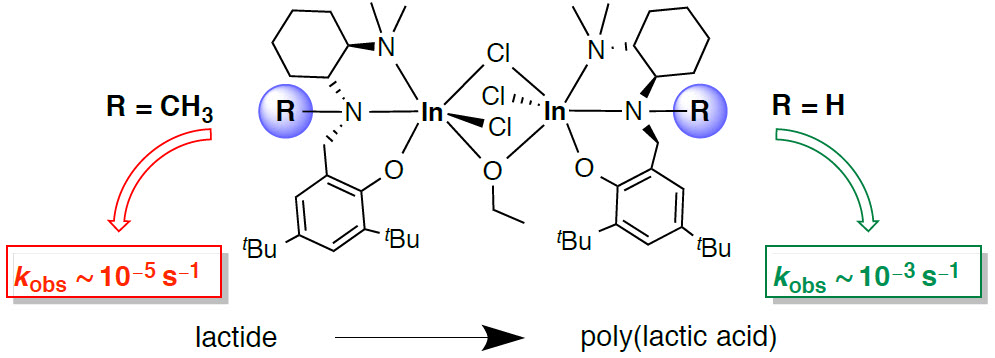
“Probing the role of secondary vs. tertiary amine donor ligands for indium catalysts in lactide polymerization”
The role of the central amine donor in a previously reported dinuclear indium catalyst, [NMe2NHO)InCl]2(m-Cl)(m-OEt) (1), for the polymerization of lactide was investigated through experimental methods. The solid state structural data of a series of dimeric complexes related to 1, including the previously reported bromide derivative [(NMe2NHO)InBr](μ-Br)(μ-OEt) (2) and the newly synthesized methylated derivative [(NMe2NMeO)InCl]2(μ-Cl)(μ-OEt) (6), showed that weak hydrogen bonding may be present within some of these complexes in the solid state. The polymerization of rac-lactide with 2, 6 and a related achiral complex [(LH)InCl]2(m-Cl)(m-OEt) (8) synthesized for this study indicate that hydrogen bonding may not influence the reactivity of these compounds. The nature of the central amine donor may play a role in tuning the reactivity of these types of catalysts. Catalysts with central secondary amine donors, such as complexes 1, 2 and 8, are two orders of magnitude more reactive than those with central tertiary amine donors, such as complex 6.